Mage Knight Ultimate Edition review — Reach for the skyrim
A sprawling tabletop RPG, Mage Knight is a deep and enjoyable experience.
Video games these days tend to hold the players hand a lot more than they used to. Whether we’re talking about entry level platformers or vast, sprawling RPG’s, there’s a general trend towards starting things off gently. A few rats or a very small gap to jump over — you know the drill. Board games rarely have the luxury of offering a learning curve as gentle, and harking back to 2012, Vlaada Chvátil’s Mage Knight presented players with one of the deepest and most challenging experiences in gaming.
Every bit as sprawling as the Skyrim, Dragon Age and Witcher games that typified fantasy RPG’s of the time, Mage Knight offered a tabletop role playing game that had monster, quests, peril and character building on a grand scale. Three expansions followed, with The Lost Legion adding a fifth player, a challenging and aggressive boss encounter and new characters, whilst Krang and Shades of Tezla further expanded the game over the next few years.
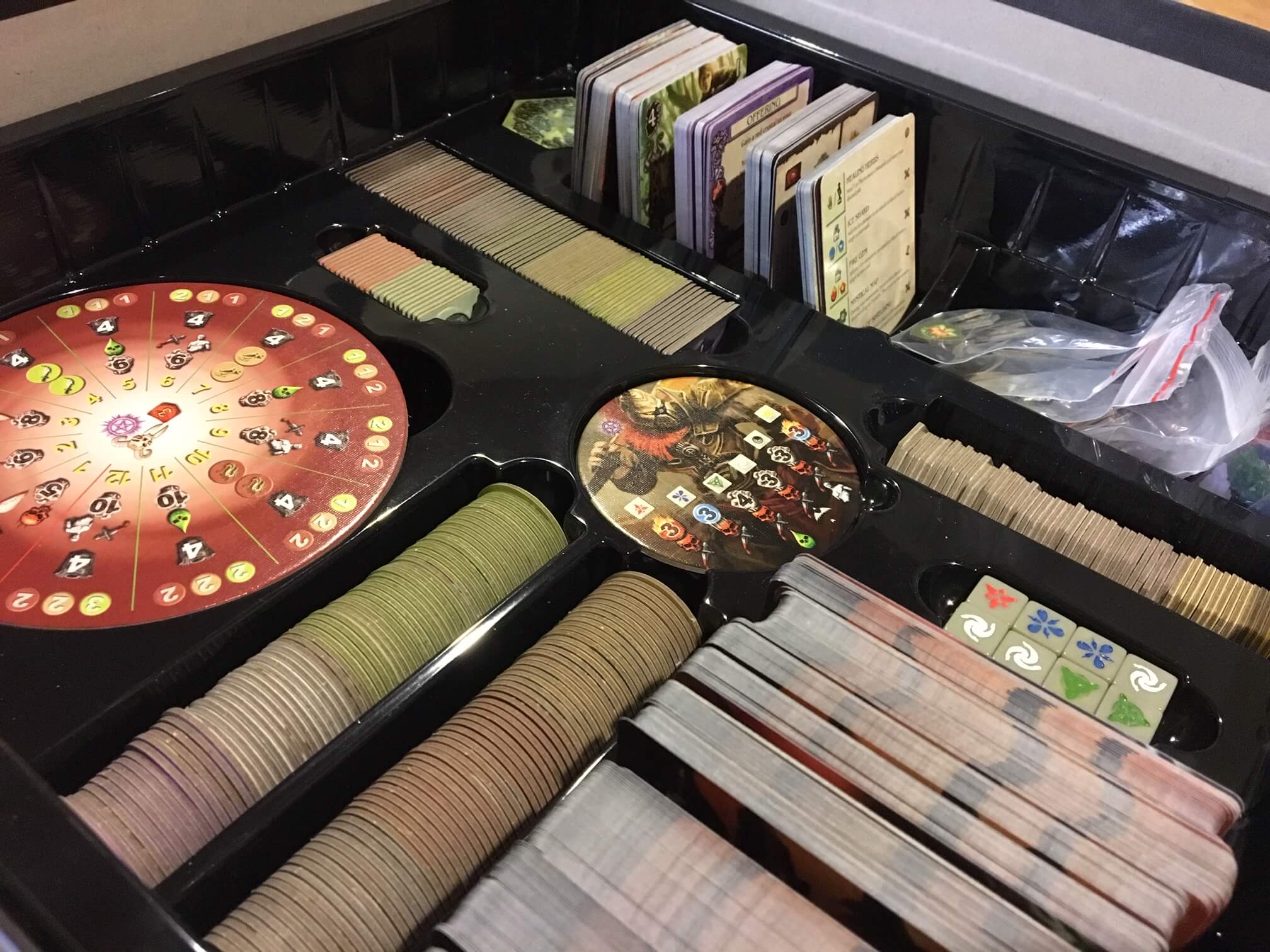
It’s been almost four years since the latest Mage Knight expansion, but late last year, I heard that Wizkids would launch Mage Knight Ultimate Edition — featuring the base game, all three expansions and a number of minor improvements and enhancements. With no video game RPG to see me through winter (I curse thee, Fallout ‘76) there was no better time to dive into the experience that some people still call the best thematic board game of all time.
The first imposing thing about MKUE is the size of its box. Standing easily twice the height of most games and with a footprint that takes up most of a large kitchen table when laid flat, I was initially alarmed about what might be in this box. Is there an actual baby dragon in there? Perhaps a small fortress? Upon opening it, there’s no doubt that the Ultimate Edition of Mage Knight is a real collector’s dream, with each character model painted in alternative outfits and all the content together in a single box, including a custom insert.

Before I get into gameplay, I do just want to mention that the presence of the custom insert is very welcome, but I would have appreciated a brief sheet onto how best to organise the game. With cards and components from, essentially, four different products (many of which share matching backs) it’s very hard for a newcomer to set the box out in any practical way. Worse still, if you intend to sleeve your cards, then they are simply not going to fit in the insert.
There’s literally no room to separate base game and expansion tokens and cards, so you’ll need to make customer dividers or similar — and do a lot of sorting. When this is all done, you’ll find about one to two inches of fresh air at the top of the box, although thankfully the cards and tokens will be held in place fairly well by a plastic overlay that sits on top of them. By no means a showstopper, but do plan on organising your box for perhaps as long as an hour upon first opening it.
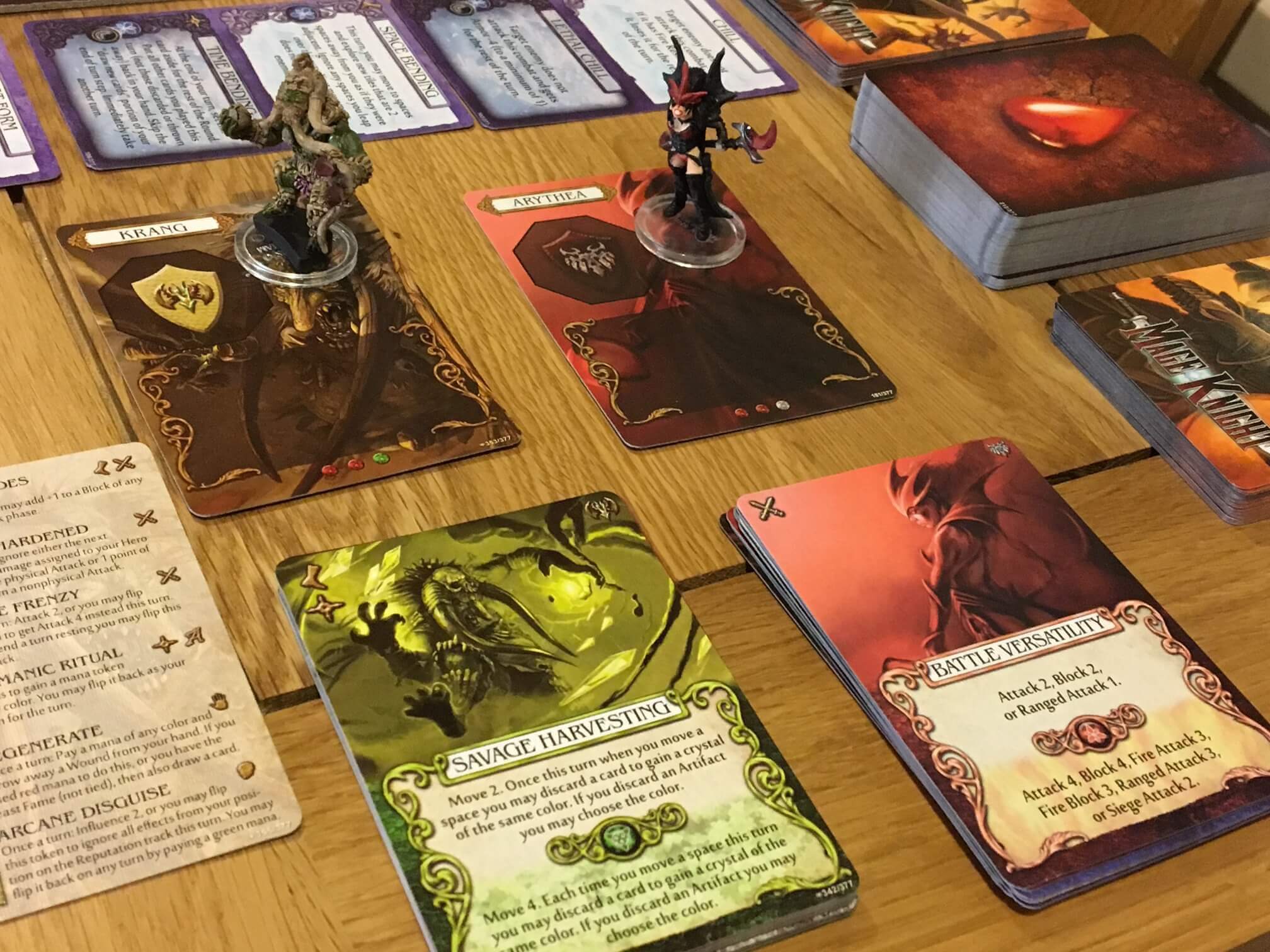
The next big decision will around how you intend to play, with whom and which of the myriad of different modes. MKUE can be played in solo, competitive or fully cooperative modes, with one to five characters in play and in four or five different modes based on randomised or pre-determined scenarios, Each of these different ways to play is described clearly in the manuals (comprising of a novice walkthrough, a full rules explanation and an expansions booklet) and perhaps the simplest to get into is Conquest.
In Conquest mode, players compete to locate cities and ultimately to conquer them within a set number of rounds. Other objectives include striving to defeat the powerful mage Volkare and his Lost Legion, or attempting to balance the power struggle between Elementalists and The Dark Crusaders from Shades of Tezla. From collecting relics and conquering cities to chasing down rampaging enemies, MKUE has a huge number of different scenarios and ways to play and that’s before we even hit the board and start to consider the various micro-objectives that come up during each game.

So you’ve chosen a way to play and you know how many people you’ll be playing with, but what sort of character do you want to play as? Again, MKUE doesn’t disappoint here, thanks to the inclusion of every character from each of the expansions. The choice, from a fantasy tropes perspective at least, is broad. There’s Braevalar the Druid, Krang, the Orc Shaman and Arythea the Vampiress. There’s a dragonkin mage, an elf paladin and a human warrior, all of which lead me to suggest that this wide variety more than makes up for the lack of a “create your own” character model, such as we’ve seen in similar games like HEXplore It, which we reviewed back in 2018.
Each character has their own deck of sixteen deed cards at the beginning of each game, and these cards will determine what they can do each turn. The decks are largely the same, but each character has one completely unique card and one that isn’t unique, but which recurs in their deck twice specifically. A key part of playing Mage Knight is levelling up your character and adding more cards (including abilities, spells and artifacts) to their hand, all of which will make them more powerful and able to complete more powerful actions with their turn.
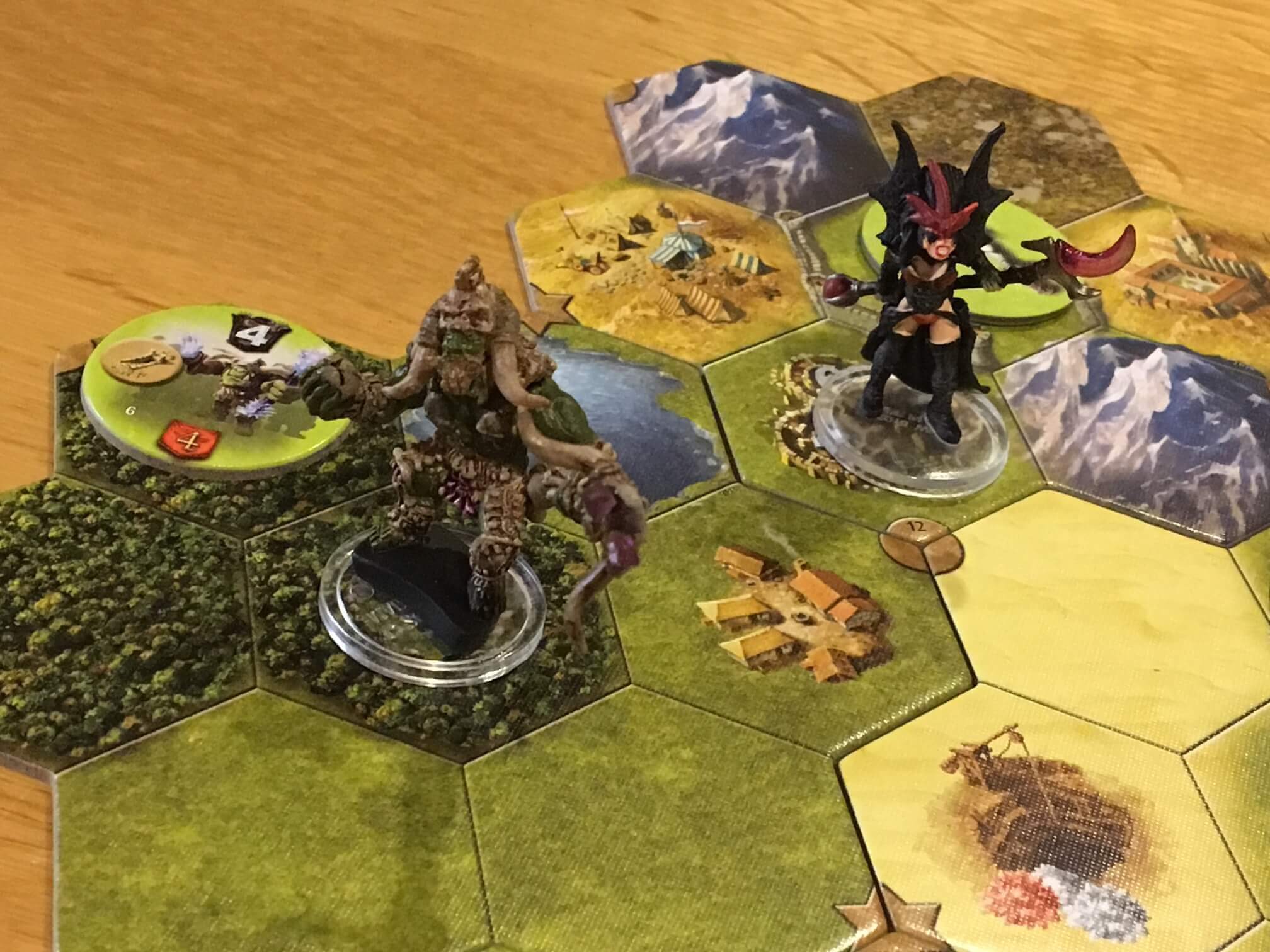
Turns in Mage Knight are very freeform, with a real focus on player agency, and this is where the complexity that the game is famous for really comes to the fore. Players may always move and then take an action on their turn (or they may take an action without moving) but to do either of these things, they must generate the appropriate number of action points. Moving, for example, will cost a set number of points depending on the terrain you wish to move into, depending on whether it is night or day. As an example, a desert will cost five points to move to during the day and three to move to during the night, whilst a forest has the same point values, but in reverse.
Generating movement points can be done in several ways, but one way would be to play one card for its base value (which might be move two) then play another for its enhanced value (which might be move four) at a cost of one mana of the colour shown and then to generate two additional movement points by throwing any two cards down sideways (sideways cards can generate one point for any action, regardless of what is printed on them.) In this example, the player would generate two, plus four, plus two more movement for a total of eight, which would allow them to move through a desert and then a forest during the day.

Assuming that in this example, they landed on a village and next to a rampaging enemy, then they would have a few choices for their action. They could take a village action to recruit one of the available units from the display by generating the amount of influence shown on the card (in exactly the same way as movement) or they could attack the enemy, which would require them to generate Attack, Ranged Attack and Block values in order to deal with the threat at hand. In either of these examples, the player would already have used four cards from their hand to move, so they would only have one (or two, maybe) left, based on the starting hand limit of five cards (with some skills that modify it upwards to six early in the game.)
This leaves one or two cards left to take their action with, but other cards like units may also be useful — for example a unit of crossbowmen can be spent to add its ranged attack value to that of whichever cards the character has left to play. Similarly, some units, spells or artifacts can add powerful additional benefits to various actions that makes them easier to complete. Much of the thrill of playing Mage Knight is in planning and executing these perfect turns where you do exactly what you need to as efficiently as possible.
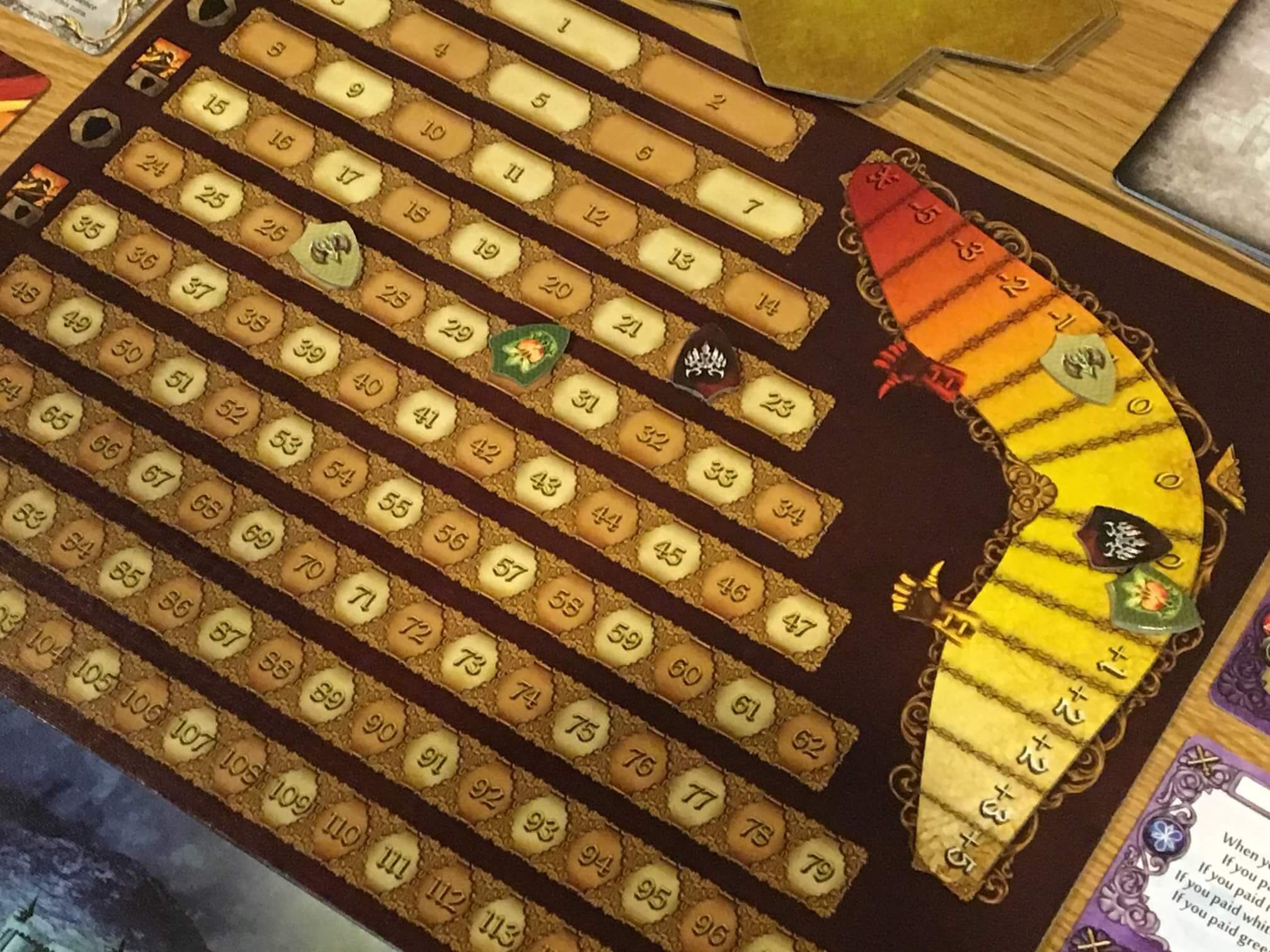
Often, as you work through cards in order to map and plan the various phases of your turn, you’ll make mistakes or realise that something more optimal might have been possible had you played differently. Thankfully, Mage Knight is fairly forgiving of this fact and has a clear set of rules for rolling back a turn — basically, as long as you’ve not gained access to anything secret or random, then you can more or less roll back at will. Unsurprisingly, this can lead to turns in Mage Knight taking quite a while, so the game also has rules to allow players to begin their turn whilst the previous player is still completing their clean up steps.
Now without oversimplifying it unrealistically, there isn’t a lot more to Mage Knight in terms of complexity, unless introducing other modules such as Volkare (who has his own AI rules) or some of the other scenario content. The game presents players with a very simple structure and a lot of freedom to execute whatever their heart desires — for example, villages can be plundered at a cost of minus one to your reputation. If you can imagine it, Mage Knight likely has a way to enable you — but how best to execute on those fantasies is where the complex puzzle is found.
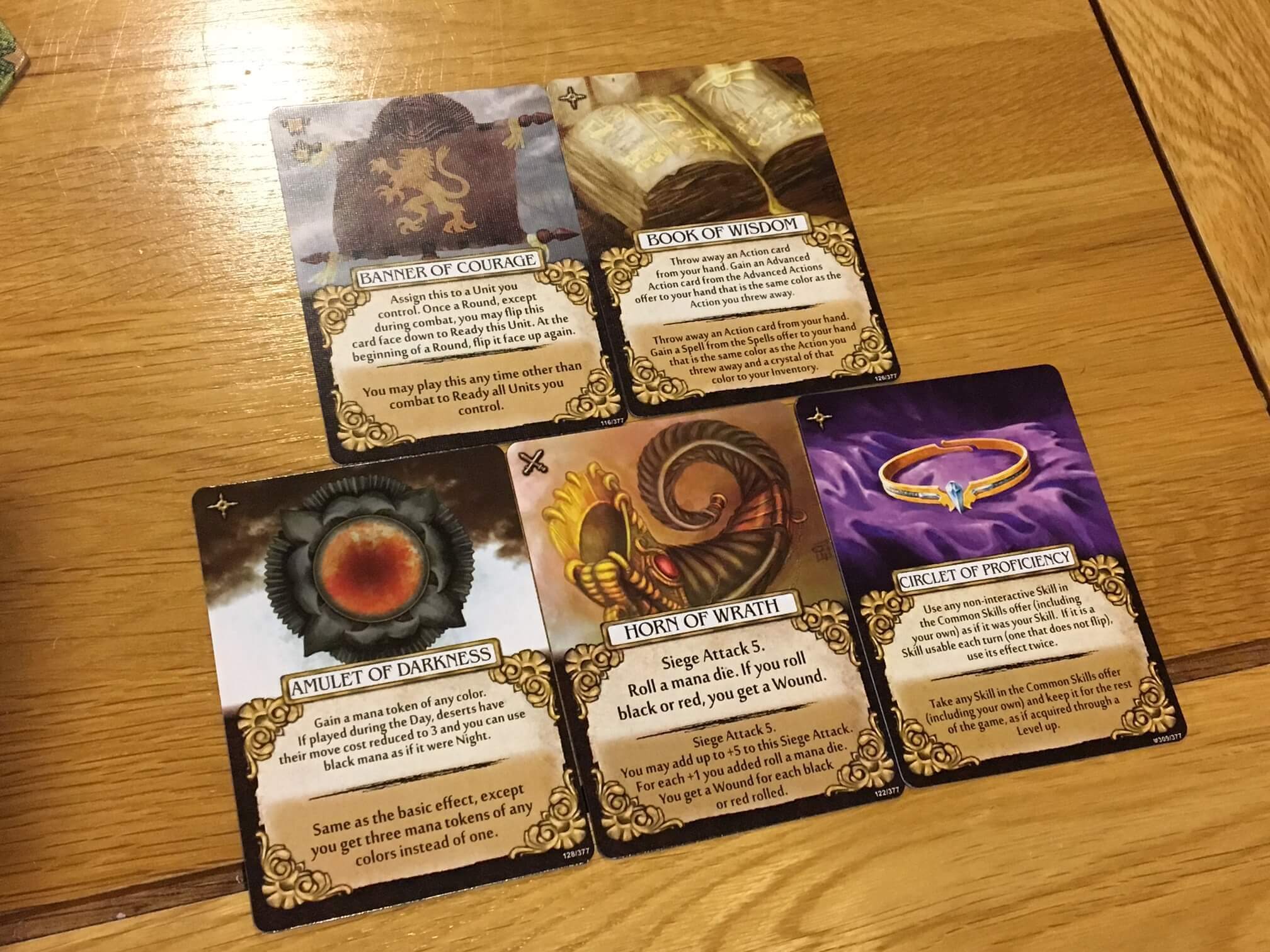
These freedoms and the shift in reputation and fame that comes with player actions is also reminiscent of games like Mass Effect or Fallout that use a system of good versus evil to change how the game world reacts to players, and how they feel about themselves. Personally, I’m willing to use deed cards that threaten or coerce units into joining with me (for a small reputation hit) because that makes thematic sense to me, but I don’t like the idea of playing as a bandit that would burn villages and be a force for evil. Arythea is a vampire though, so what would she care for the strife of humans? There’s real opportunity here to pick a character and to really experience the story of each given scenario through their eyes.
This concept is made even more interesting depending on the mode you wish to play in. Cooperative is an interesting one if players have very different views about the desires of their character — can an evil character work with a good one to achieve a common goal? In competitive mode, on the other hand, Mage Knight supports player versus player combat, so if players do find their characters taking polarising approaches, they can literally settle their differences by fighting it out. I’ve had games that featured the kind of friendly bickering that players of Baldur’s Gate 2 will think back fondly on, albeit between real life friends acting in role rather than Minsc and Dorn with their pre-scripted banter.
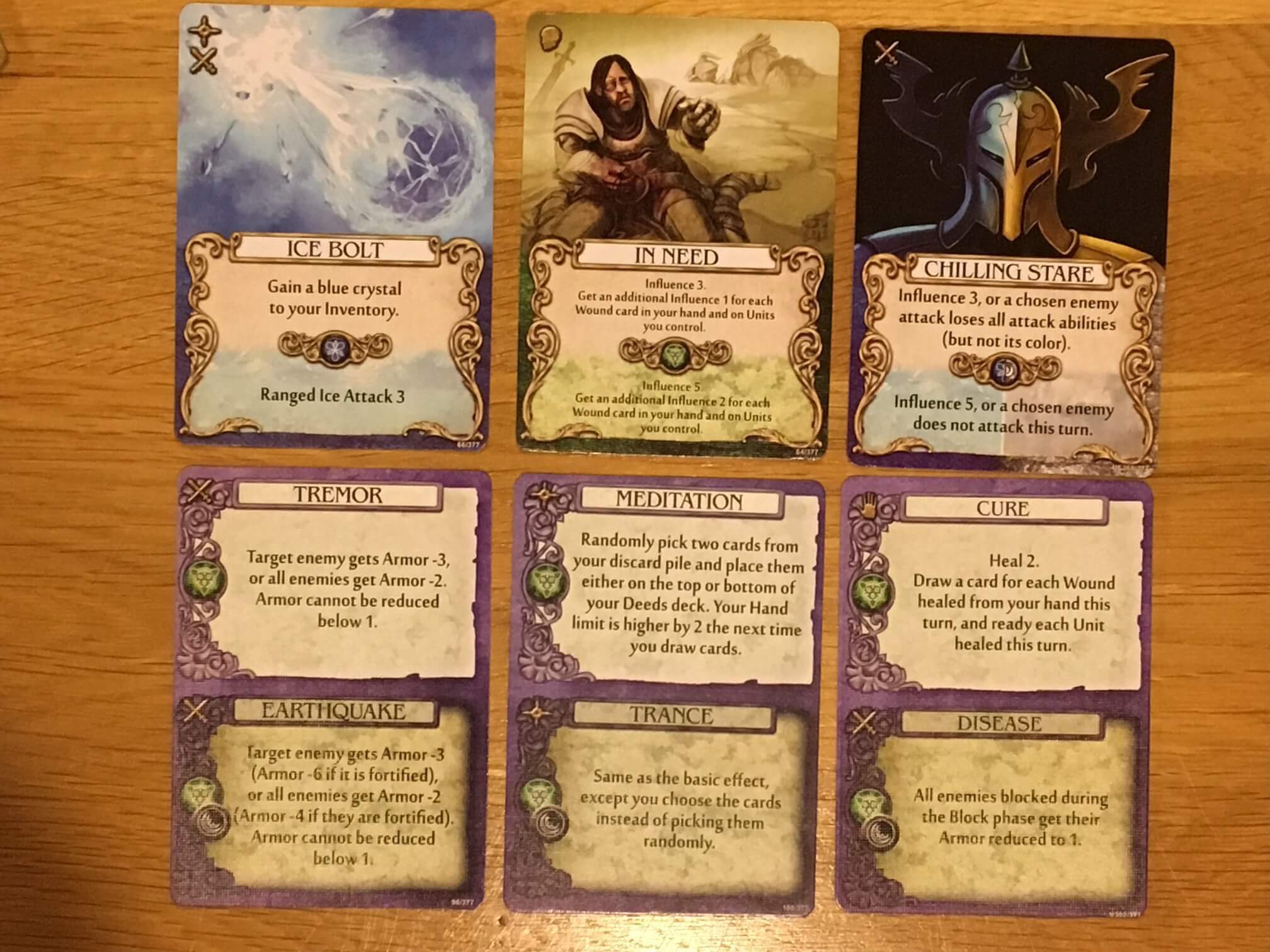
Now, I can’t and won’t admit to having played every possible mode that Mage Knight has to offer, nor have I seen every scenario. Each game last about three hours on average (maybe a little more, but rarely less) and as such, it can be quite an undertaking. That said, with the nights drawing in earlier and the weather turning colder by the day, I’m finding the idea of setting up bigger, more complex games like this more and more appealing. The fact that there really isn’t a video game RPG floating my boat this winter has almost meant that I’ve been playing Mage Knight solo quite a lot — and it’s surprisingly good.
If you’re in a similar position and you think you can collect two or three friends for the occasional game of Mage Knight, then I think that this Ultimate Edition looks like very good value. There’s at least a hundred hours of story content in scenarios listed to begin with, plus a huge amount of replay value and variation due to the module board, the different ways to setup and the different characters to choose from. To summarise, MKUE is a daunting prospect, but if you can persevere through the first few hours of intense sorting and learning, then there’s a hell of an interesting game here. If you’re a heavy RPG (video or tabletop) then MKUE is a must have as far as I am concerned.
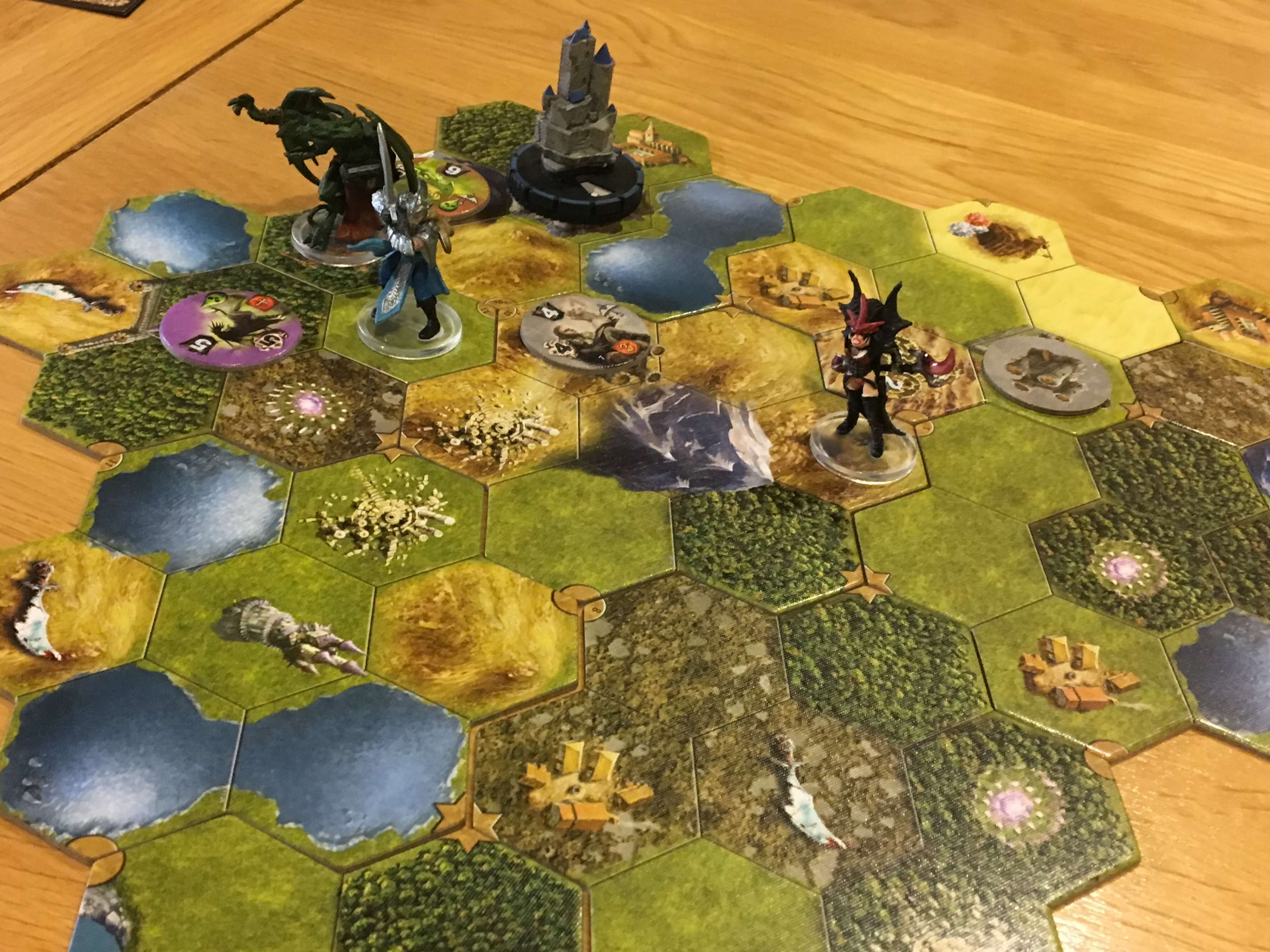
A copy of Mage Knight was provided for review purposes, and can be purchased from all good local games stores. For online purchases, please visit 365 Games

Hi Matt,
Really nice review of my favourite game right now.
A couple of points: there needs to be a “not” added into the paragraph about rolling back between “you’ve” and “gained” i.e. “basically, as long as you’ve NOT gained access to anything secret or random, then you can more or less roll back at will” and thankfully plundering a village only leads to a -1 hit in Reputation not -3 as described.
Thanks!
Thank you Phil, I will correct those now – appreciate you reading through this thoroughly! It’s a huge game, so I am not surprised I missed a bit or two – as it happens, the first point you raise is a typo and we played it correctly, but alas, the second, we did take the -3 hit when being tyrannical…. At least it led to a more relaxed play, hah!
Regards
Matt
PS, given that you like this kind of game and have taken the time to reply, please do check out our latest review for Waterdeep, as it gives the chance for you to win a copy!
http://bigbossbattle.com/waterdeep-dungeon-of-the-mad-mage-dungeon-diving-giveaway-review/
Regards
Matt